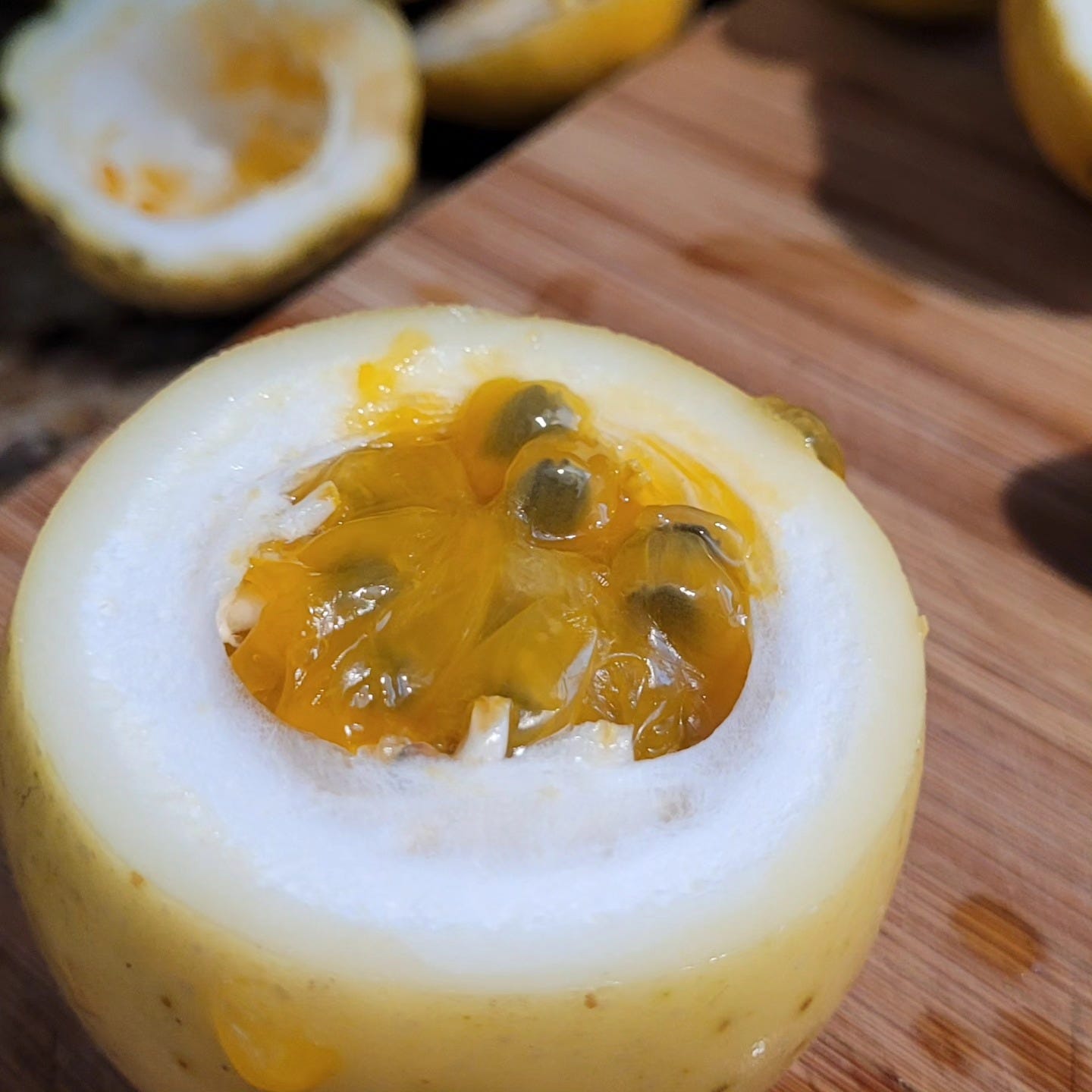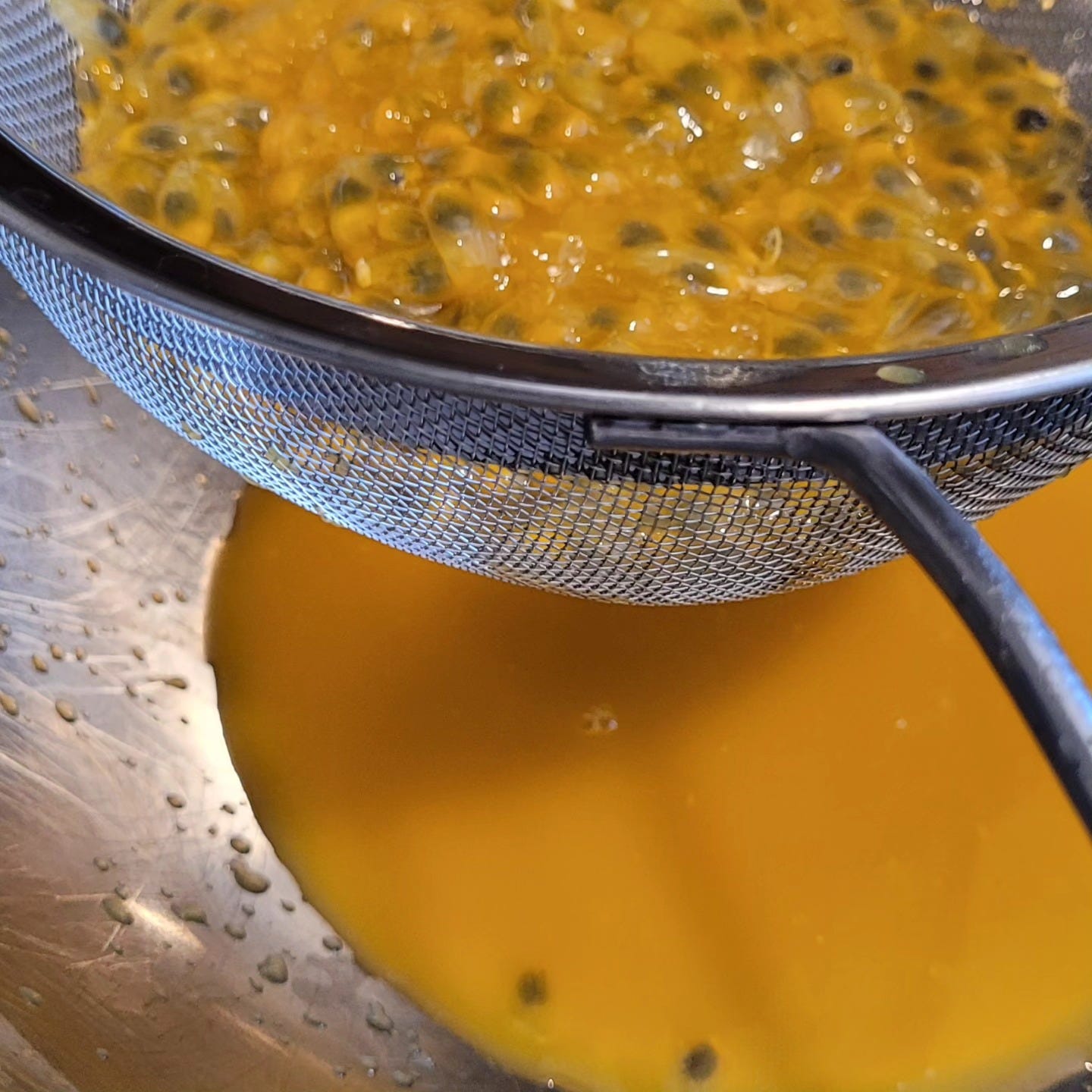Memories
Down the road from where I grew up was a house that doubled as a mini market for the community. La tiendita de Don Johnny (Mr. Johnny’s little store). There they sold the basic groceries for the week, along with candies, and they had an arcade room on the porch.
I used to spend hours with my friends, playing at the arcade there, but for me there was a secret. When the season was in its prime - which I never really knew when it was - a huge mango tree that was behind Don Johnny’s house would display a beauty of almost unmatched proportions.
It happened that such a tree was in a tight romance with a passion fruit vine (Passiflora edulis) of the yellow variety (P. edulis flavicorpa). When the vine was in heat to reproduce, it would burst in an orgasmic display of something crazy for me.
A mango tree, birthing passion fruit (parcha, maracuyá, or granadilla).
At least that's how it looked like in my head. My friends and I used to collect them for their delicious interior. It appears that we all share the same secret.
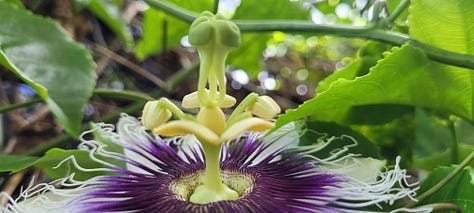
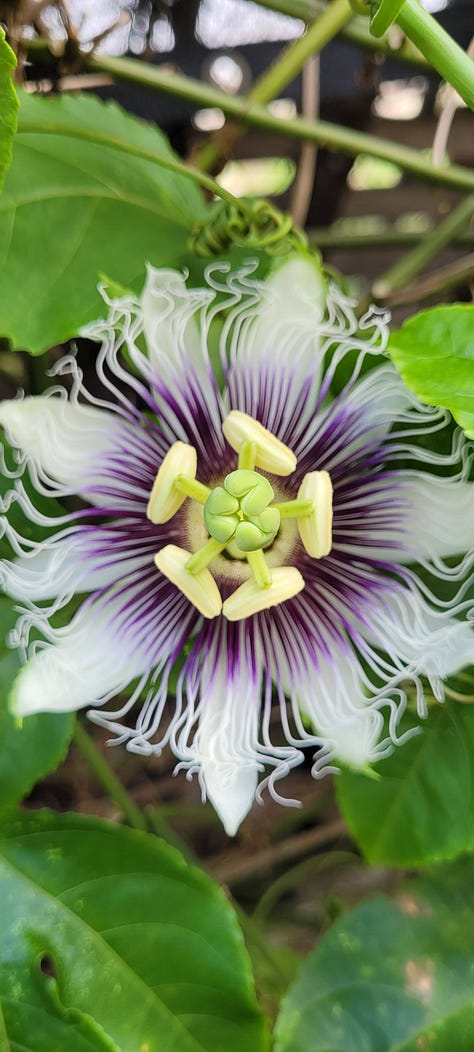
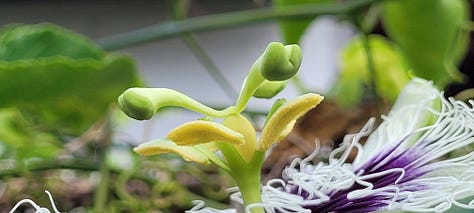
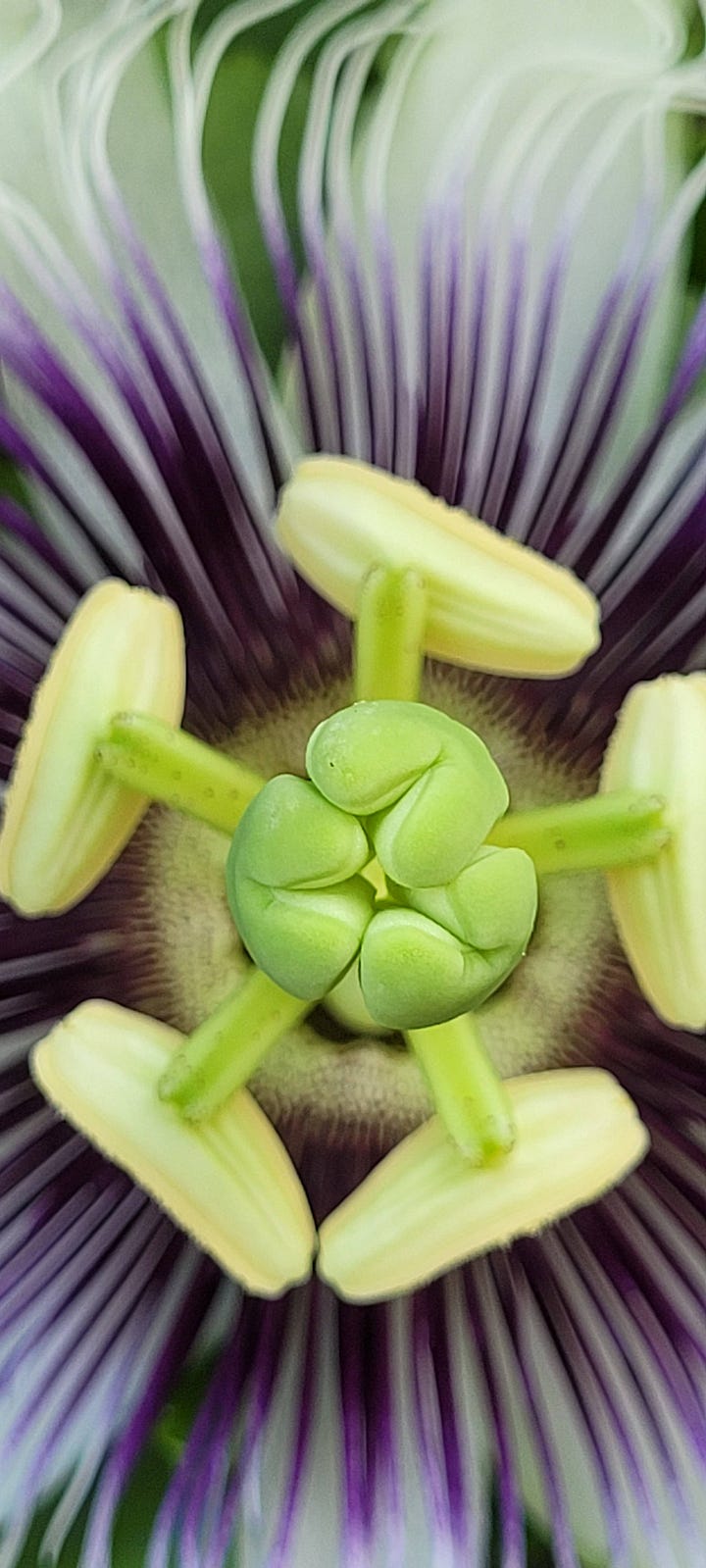
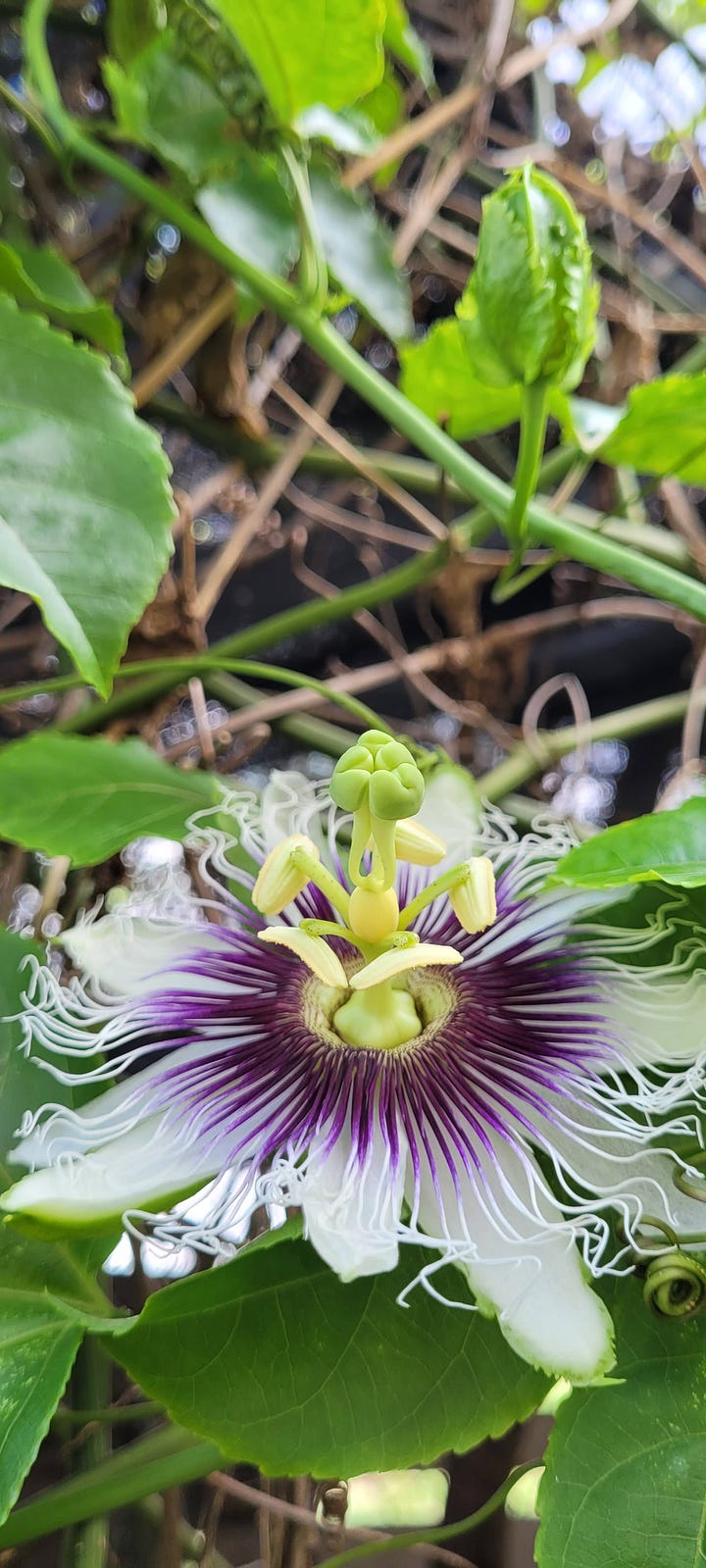
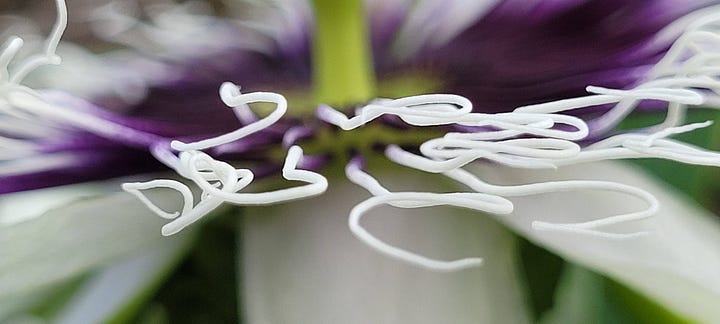
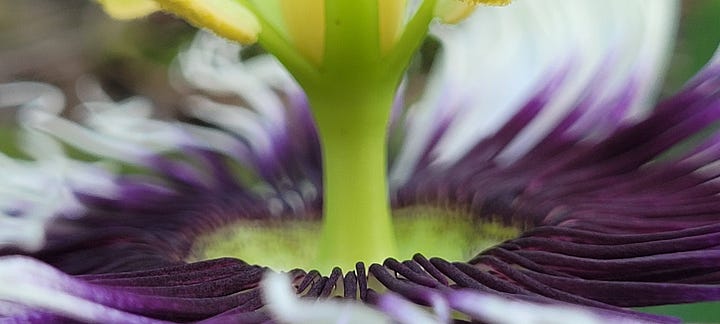
I would use my shirt as a bag, or carry as many as I could in my pockets and arms, to bring them home. My mom would cut them open and extract the pulp to make juice. I loved to taste the delicious bitterness of such a creation of nature.
The bitterness, if you weren't into it in that particular moment, was easily corrected with some sugar. Nowadays I like to also use honey as well (and sometimes I add a dash of whiskey).
In an ideal situation one would have the chance to cut open his own parcha, recently picked from the vine by oneself - to add to the sensation of earning such a great flavor. One cuts the tip of the fruit to reveal its interior and pours in half a teaspoon of sugar - to then proceed to stir, until everything is juicy and squirty, and almost impossible to resist. One would then bring the parcha to his mouth and suck in the nectar that formed inside, a bittersweet taste that would revive the soul. One would roll his eyes backwards and feel his knees weakening as the passion manifests within.
I really like passion fruit, not only because of its taste, but also because of the memories they bring (always present in moments of joy and play). I now have my own vine at home, inherited from mom and dad, (a Florican Passion Fruit) from which we have extracted a great amount of pulp that we have frozen for later use.
Uses
Passion fruit has many uses pertaining to cooking and otherwise. Ideal for juice, ice cream, teas, cocktails, and vinaigrette. Also, for sauces, marinades, frostings and fillings. Or just for spooning some into your mouth (or over your partner) to feel it’s true nature - pleasure.
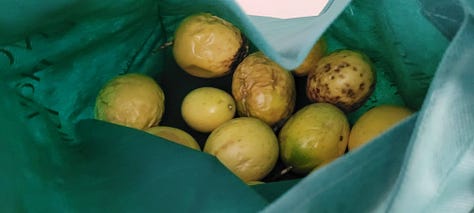
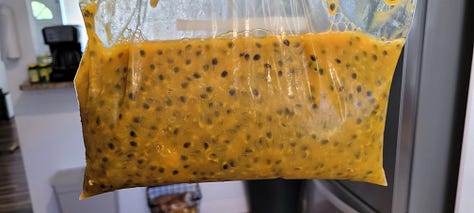
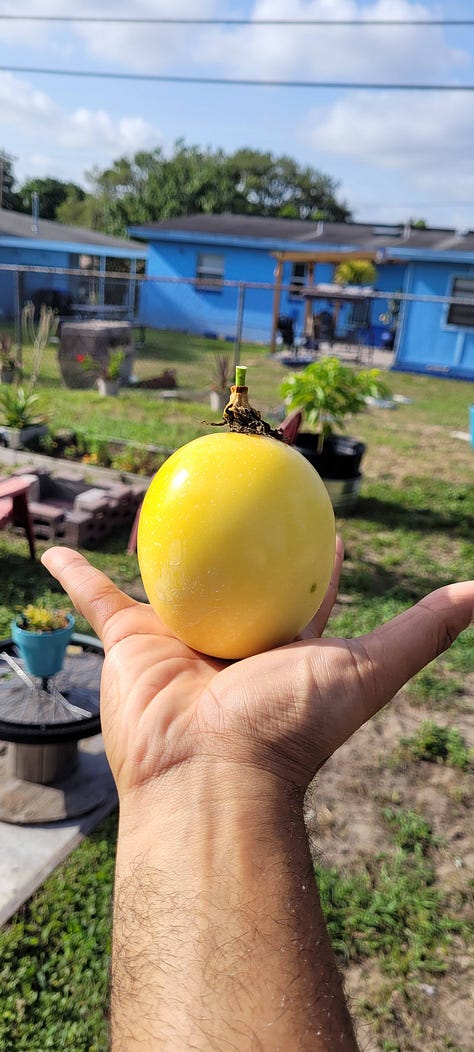
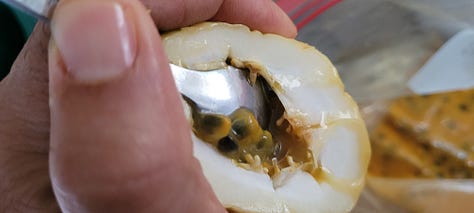
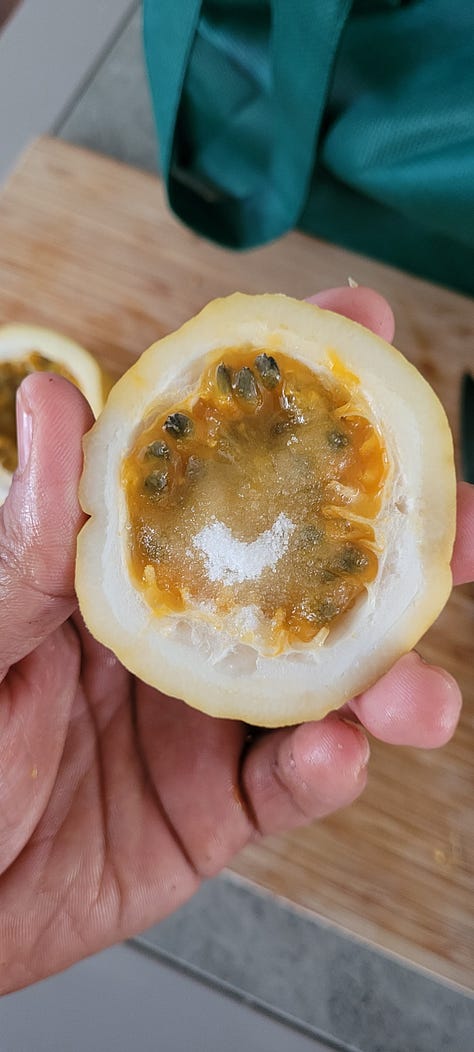
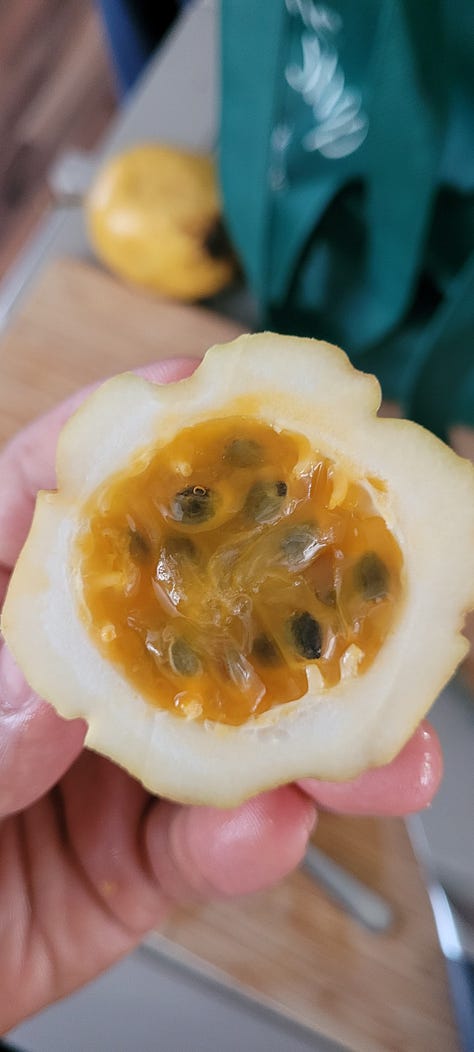
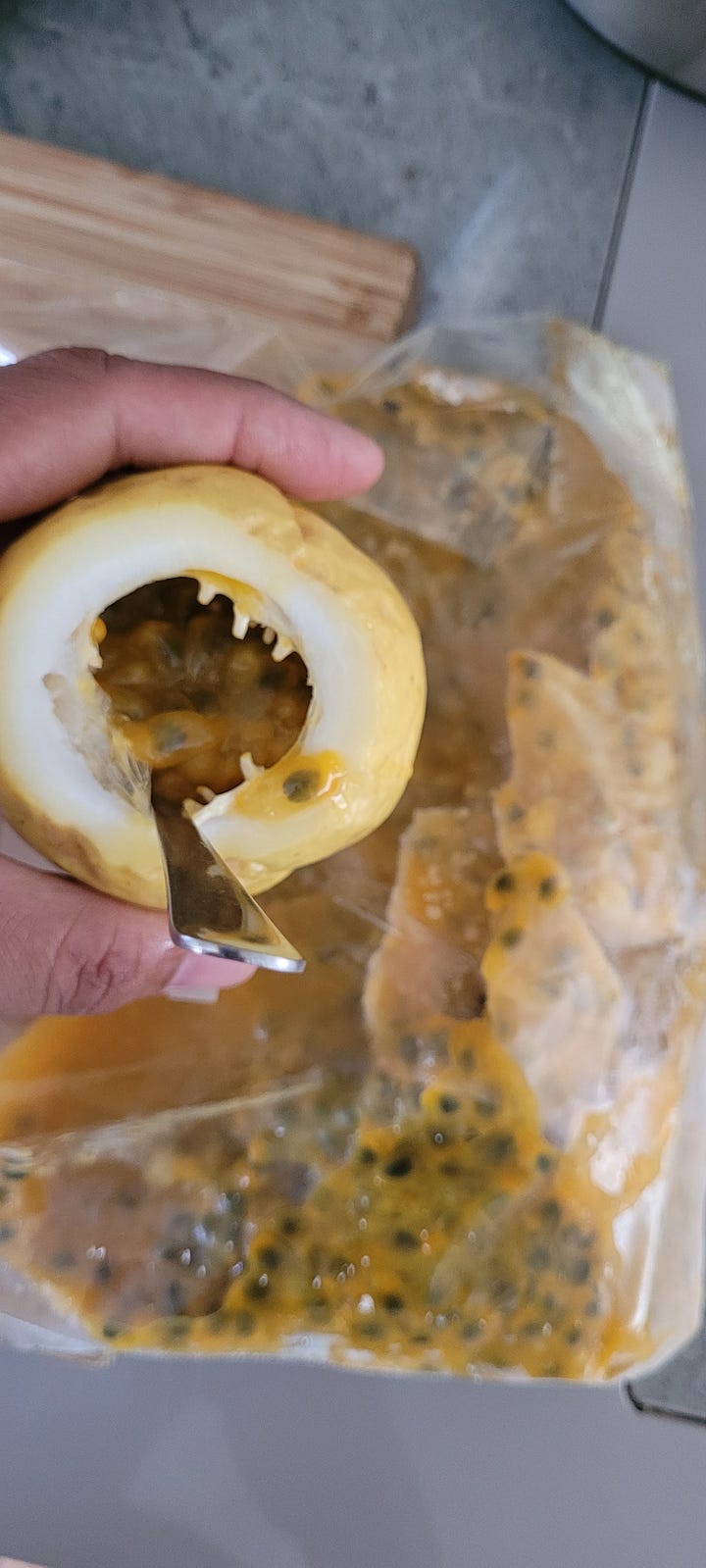
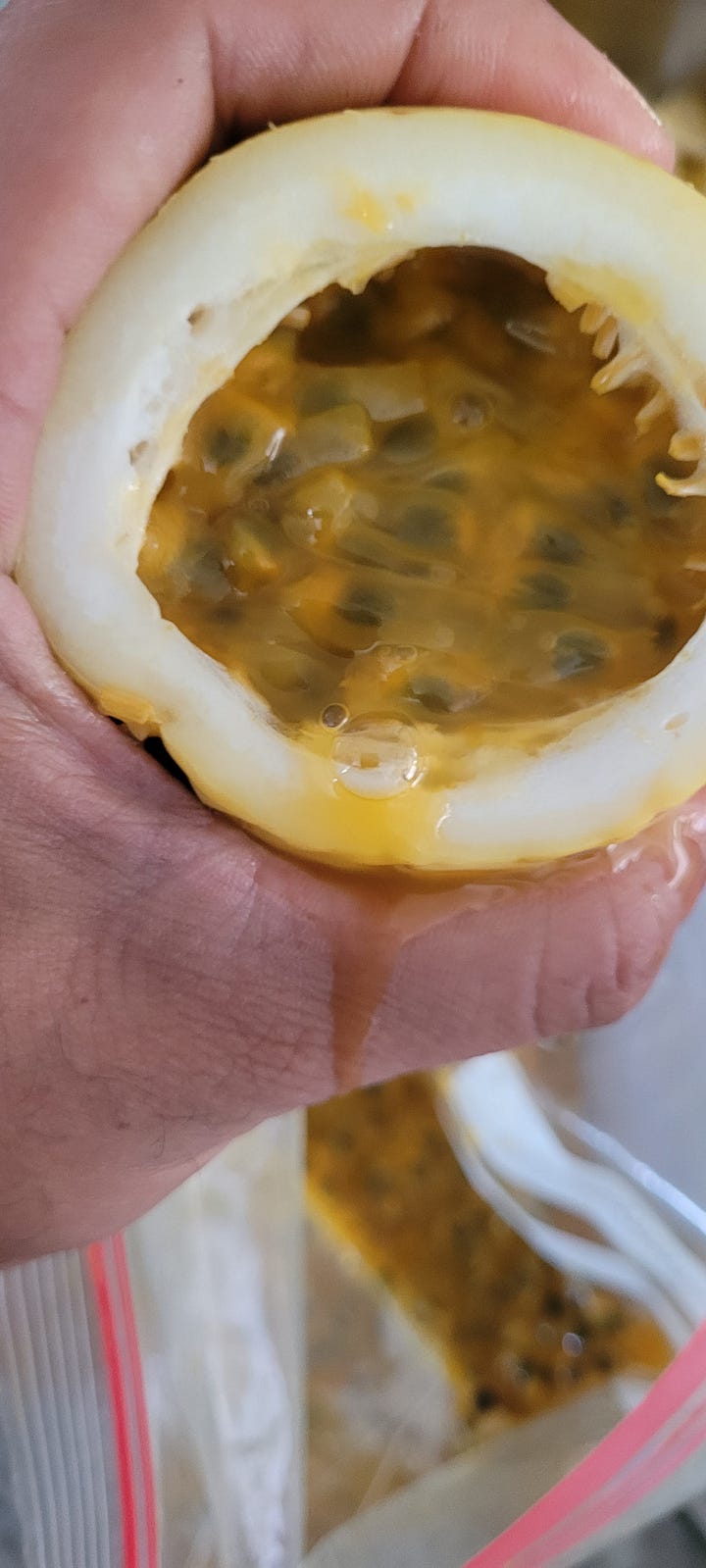
FACTS
According to the book The Gourmet Atlas: The History, Origin, and Migration of Foods of the World, passion fruit “was discovered by a Jesuit missionary who first noticed its flowers in the jungles of Brazil”. And according to The Food Timeline this was somewhere around the “1880s”.
In a book called Fruits of Warm Climates by Julia F. Morton she provides information on the different varieties of this delicious fruit.
Note: The list below was copied and pasted from Purdue University’s Website Site. It (and other details they share) are part of a chapter from Morton’s book. I decided to look up the book and link to it for your reference.
'Australian Purple', or 'Nelly Kelly'–a purple selection of mild, sweet flavor, grown in Australia and Hawaii.
'Common Purple'–the form growing naturalized in Hawaii; thick-skinned, with small seed cavity, but of fine flavor and low acidity.
'Kapoho Selection'–a cross of 'Sevcik' and other yellow strains in Hawaii. A heavy bearer of large fruits but subject to brown rot; many fruits contain little or no pulp and the juice has the off-flavor of 'Sevcik' though not as pronounced.
'Pratt Hybrid'–apparently a natural cross between the 'Common Purple' and a yellow strain; subject to rot, but juice is of fine color and flavor, low in acid.
'Sevcik Selection'–a golden form of the yellow selected in Hawaii; a heavy bearer, but subject to brown rot and the juice has a peculiar woody flavor.
'University Round Selection'–Hawaiian crosses of 'Waimanalo' and 'Yee'–fruit smaller than 'Yee'; not as attractive but yields 10% more juice of very good flavor.
'University Selection No. B-74'–a Hawaiian hybrid between 'Pratt' and 'C-77', usually yellow, occasionally with red tinges; resembles 'Waimanalo'; has good juice yield and very good flavor.
'Waimanalo Selection'–consists of 4 strains: 'C-54', 'C-77', 'C-80', of similar size, shape, color and very good flavor, and 'C-39' as pollinator.
'Yee Selection'–yellow, round, very attractive, highly disease-resistant, but fruit has thick rind and low yield of juice which is of very good flavor.
Passion fruit juice (informal recipe)
Grab yourself a few parchas (two, or three… or four or six…) As many as you can get (hopefully freshly picked, for sentimental nutritional value).
Most Hispanic, Caribbean, and Asian markets (or sometimes even big chain supermarkets) bring passion fruit pulp to their frozen isles. Not the whole experience but it makes for a great tasty and refreshing juice.
Slice each fruit down the middle.
Using a mixing bowl with a strainer (see picture above), extract the pulp of each fruit - and using a big spoon or a spatula - stir and mash the pulp against the net until you are left with almost no juice in the pulp.
Add a few seeds to your juice to have the full tropical experience. They are crunchy!
Mix your passion fruit juice with warm water and mix with sugar - steering constantly until the sugar dissolves.
Add the water and the sugar little by little, tasting as you go, to avoid over-sweetness or to water down the juice too much. Do this until you reach your desired balance.
Serve in a glass full of crushed ice, stir, and enjoy!
But what about some passion fruit margaritas? Just a thought!




